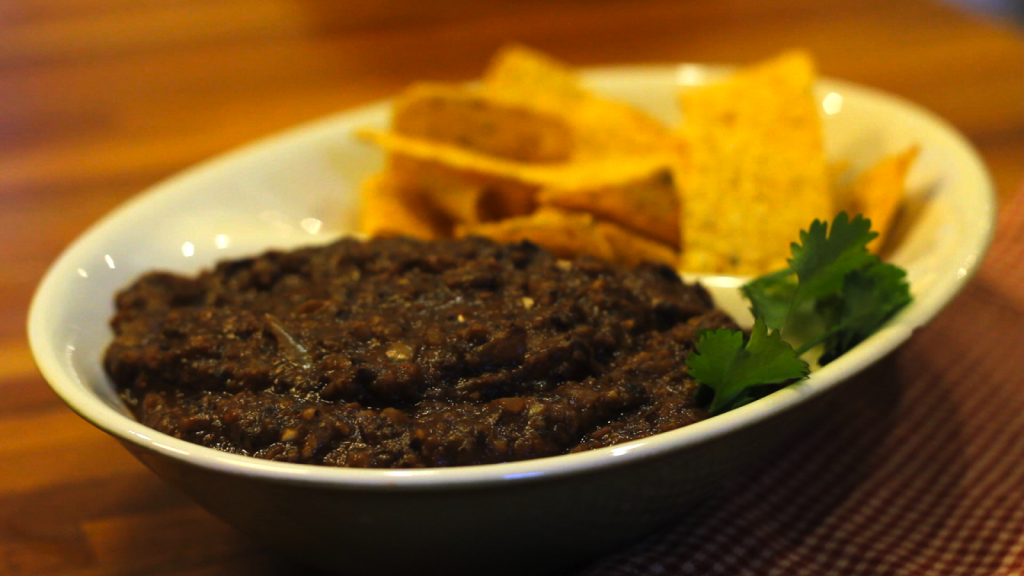


Plant-Based Recipes, Health Resources, & Inspiration for Kind Eating


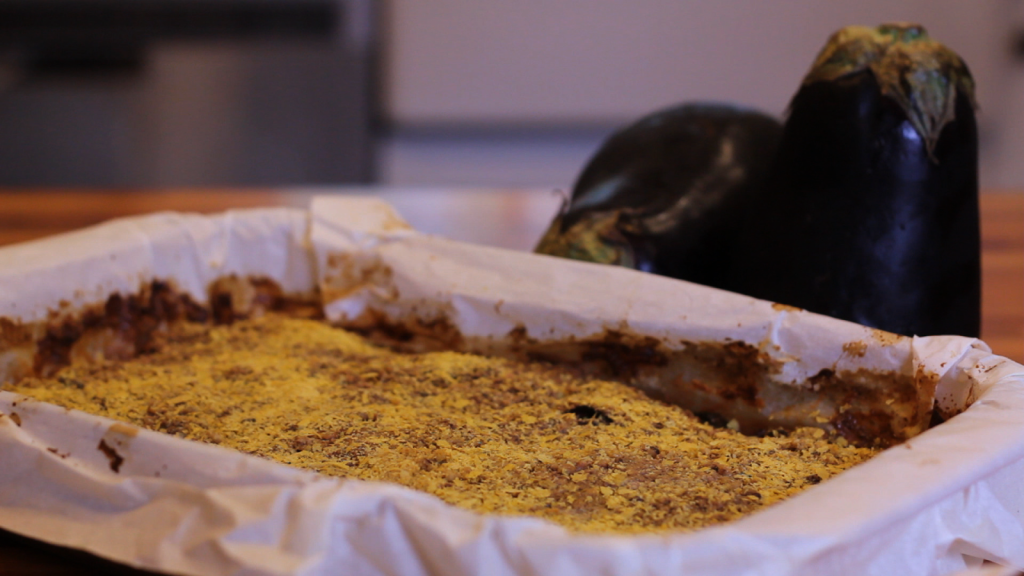
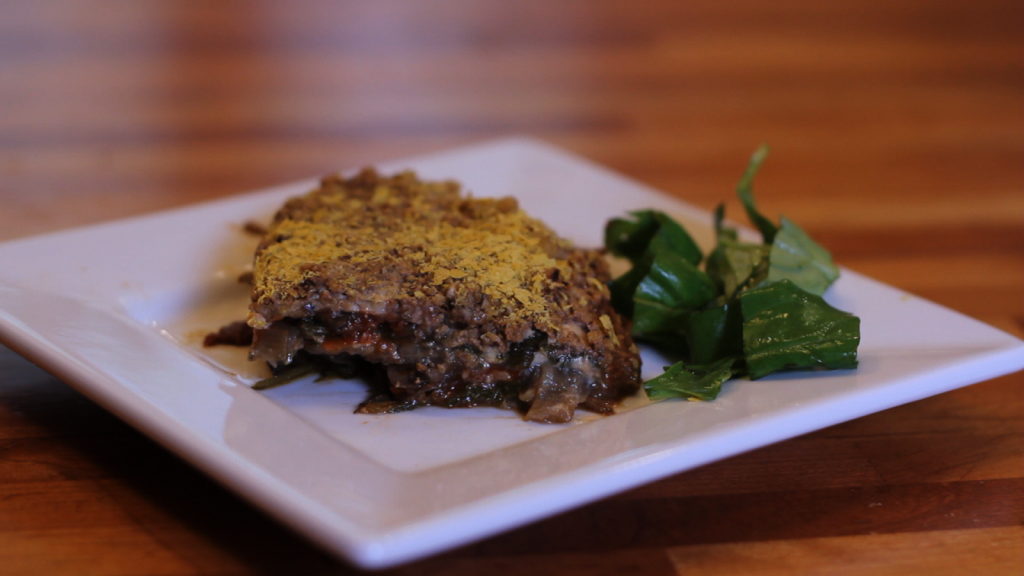
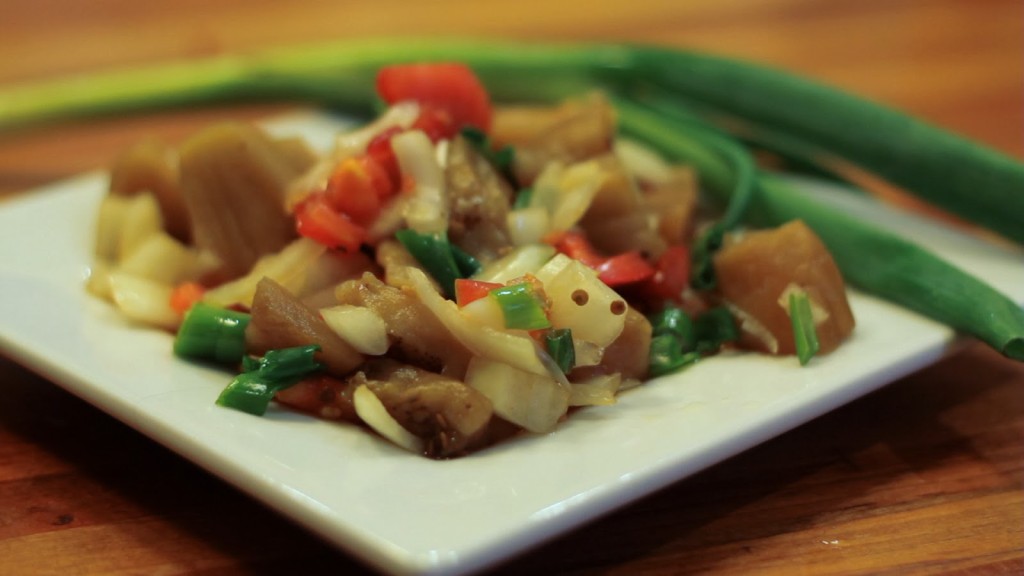
“Ensaladang Talong” is a traditional Filipino eggplant salad that is typically made with shrimp paste and lots of white vinegar. One of the reasons for so much white vinegar is because it helps reduce the fishy taste of the shrimp paste and the fish this salad usually accompanies. That just seems silly to me, especially when you could just not use any shrimp paste and serve it with something other than fish. Personally, I want to taste the ingredients in my dishes. If something doesn’t taste good and isn’t serving any particular function, then why bother including it?
In the recipe below, I show you how to prepare a fish-safe version of this salad. Since I wasn’t using shrimp paste and, therefore, didn’t need to worry about cutting any flavors, I used rice vinegar, which is milder and sweeter than white vinegar, and really enhances the tangy combination of the onion, tomatoes and chili.
I like to make this salad and then enjoy it in a variety of ways over the next several days. Some of my favorites ways to eat it are with grilled tofu, tossed with garbanzo beans, or over a bed of brown rice. What might some of your favorite ways to enjoy this salad be?
Ingredients:
1 large eggplant
2 tomatoes, chopped
1 onion, chopped
1/2 teaspoon salt (optional; I prefer to omit)
1 slice red chili
3/4 cup rice wine vinegar
2 tablespoons low-sodium soy sauce or tamari
2-3 scallions
Instructions:
1. Prick the flesh of one large eggplant with a fork and roast at 100 degrees for 45 minutes. Once cool, peel the skin, cut the stem and mash lightly with a fork.
2. In a bowl, combine two chopped tomatoes, one chopped onion, one half teaspoon salt and one slice of red chili. Add the eggplant and then toss to mix.
3. To prepare the dressing, mix three quarter cup of wine vinegar, two tablespoons of soy sauce and some freshly ground pepper. Pour the dressing over the vegetables and mix and then garnish with some sliced scallions.


Mustard greens are so incredibly healthful, it was hard to decide which of their many benefits I ought to focus on in this post. Here are just three reasons why you’ll want to incorporate more of these luscious leafies into your diet:
Cardiovascular Benefits
Mustard greens support the cardiovascular system in three significant ways. First, they are anti-inflammatory. Inflammation narrows the arteries and increases the risk that they’ll become blocked, so these anti-inflammatory properties are obviously a huge benefit. Second, by binding with bile acids in the intestines, mustard greens help lower cholesterol levels. And third, because mustard greens are exceptionally high in the B-vitamin folate, they help prevent homocystein build-up. Homocystein is an amino acid found in the blood that is acquired mostly from eating animal products. High levels are related to the development of heart and blood vessel disease.
Cancer Prevention
Mustard greens are also powerful cancer-fighters because they are LOADED with a broad spectrum of antioxidants. Chronic oxidative stress is a major risk factor for the development of most cancer types and antioxidants lower our risk of oxidative stress on our cells (hence the name: anti- oxidants). For the record, plants have on average 64 times more antioxidant power than animal products. The few antioxidants that do happen to be found in animal products are only there because those animals were fed plants.
Bone Health
And lastly (though I truly could go on endlessly), mustard greens are an excellent source of calcium. While dairy products have long been touted as “good for your bones,” the countries with the highest consumption of dairy also have the highest rates of osteoporosis. This is because dairy, like all animal products, is highly acidic. The body needs to keep a very specific acid-alkaline balance in order to function, so whenever animal products are consumed, the body must find an alkaline source so it leaches the calcium from our bones (which is high in alkaline). So, in fact, consuming dairy products are quite harmful to our bones. Mustard greens, on the other hand, along with other greens like kale, collards, bok choy, broccoli, and okra, are not acidic and thus only contribute to the strength of our bones.
So while you enjoy this quick and tasty recipe, you can also feel good knowing that you are eating one of the most healthful foods on the planet!
Resources:
http://www.whfoods.com/genpage.php?tname=foodspice&dbid=93
http://www.vrg.org/nutrition/calcium.php
http://www.pcrm.org/health/health-topics/calcium-and-strong-bones
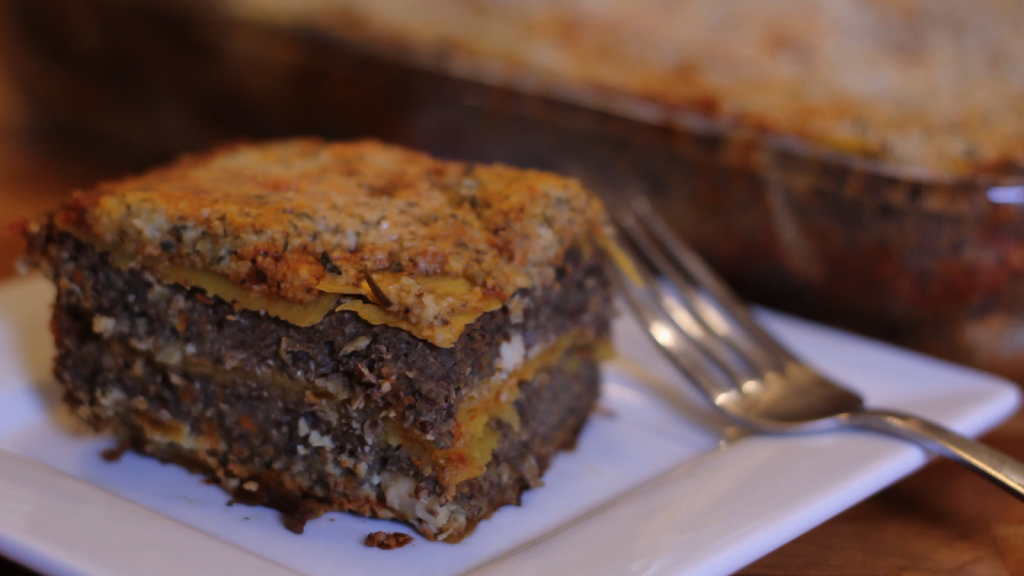
Need a dish that is guaranteed to impress? This is definitely the one.
I love this recipe because it includes everything we love about lasagna–the warmth, the comfort, and the heartiness. But, unlike traditional lasagna, my version is incredibly healthful. Not only does it leave out all animal products, it’s also made entirely of whole foods! Rather than using pasta noodles made with processed white flour, I instead use very thin slices of butternut squash. This makes the lasagna more healthful, more flavorful, and more colorful!
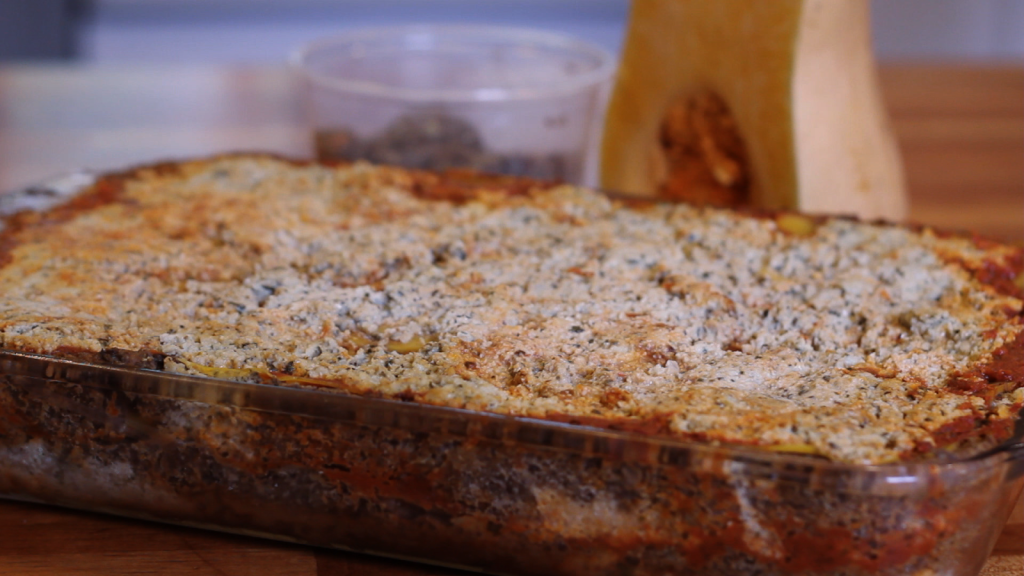
1/3 cup fresh basil
Instructions:
1. To make the sausage: Saute the carrot and onion for 10-15 minutes. Once browned, place vegetables into a food processor along with all the spices and flax. Add cooked quinoa and lentils and pulse just till ingredients begin to stick together (about 10-15 times). Place mixture in a pan and brown.
2. To make the ricotta: Place cashews, nondairy milk, lemon juice, garlic, and maple syrup in a food processor and blend till just smooth (remember, ricotta is somewhat grainy rather than completely whipped). Add in the basil, Italian herb blend, salt and pepper and pulse until blended in.
3. Preheat the oven to 400 degrees.
4. Spread a thin layer of marinara onto the bottom of a glass dish.
5. Layer the squash on top. Avoid overlapping pieces as much as possible.
6. Place a layer of ricotta on top.
7. Spread a layer of sausage crumbles on top.
8. Add another layer of squash and then another layer of marinara sauce.
9. Start again at step 6 and repeat until near the top of the dish. Top with any remaining ricotta.
10. Cover with tin foil and bake for 40 minutes or until a knife can be easily inserted all the way through.
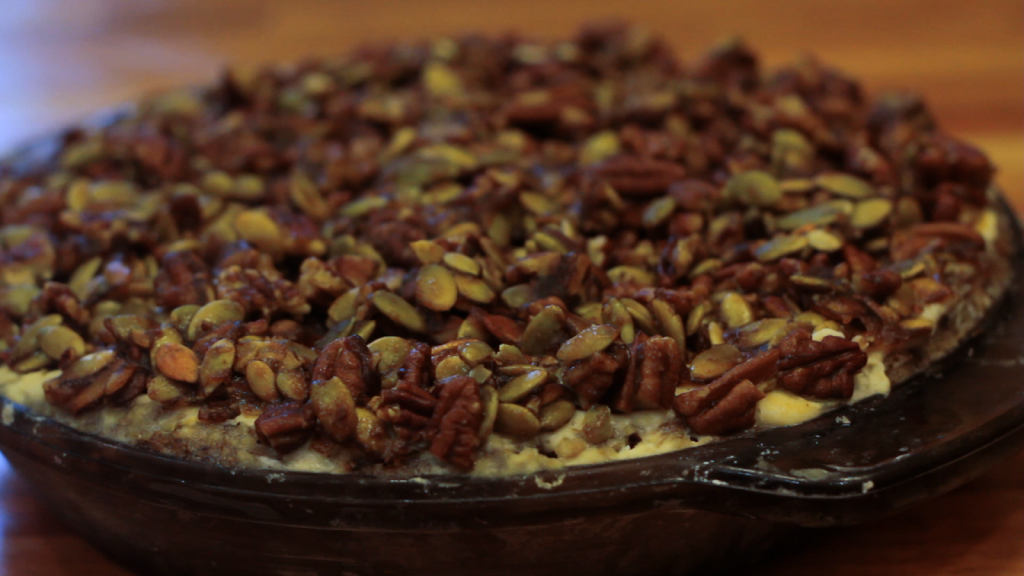
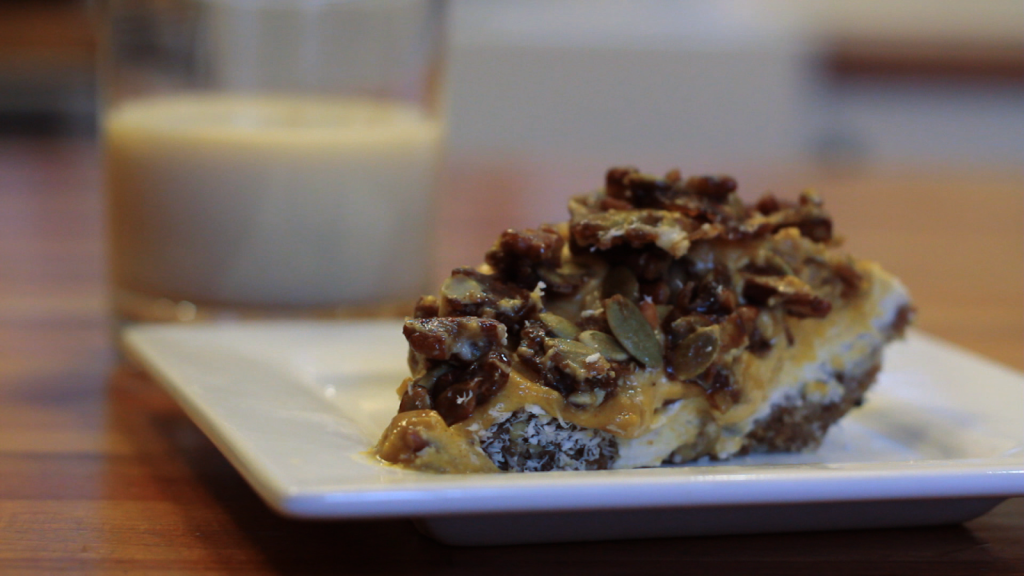
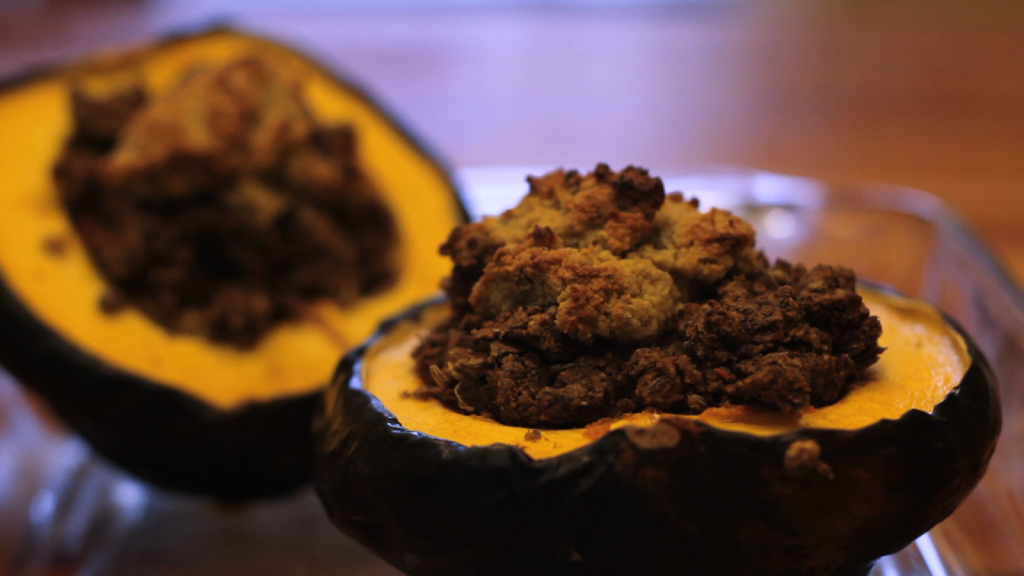
One of the things people worry about when contemplating going vegan is what the holidays will be like, particularly Thanksgiving. I recently received an email from a non-vegan friend who said that she had just learned about what happens to turkeys in slaughterhouses “and now Thanksgiving is ruined!”
Au contraire! The best Thanksgiving I ever had was my first vegan Thanksgiving. I felt that I was actually honoring the true spirit of the holiday, which is about giving thanks and celebrating life. Plus, putting aside the ethics and the health, it was the most delicious Thanksgiving I had ever had. After all, aren’t the real stars of the Thanksgiving meal the sides and the desserts?
One option for a vegan Thanksgiving is to have the meal be made up entirely of delicious side dishes. Personally, I think that would be absolutely fantastic, but I also know many of us are used to and enjoy having a main dish as a central focal point. Hence, this gorgeous stuffed acorn squash recipe!
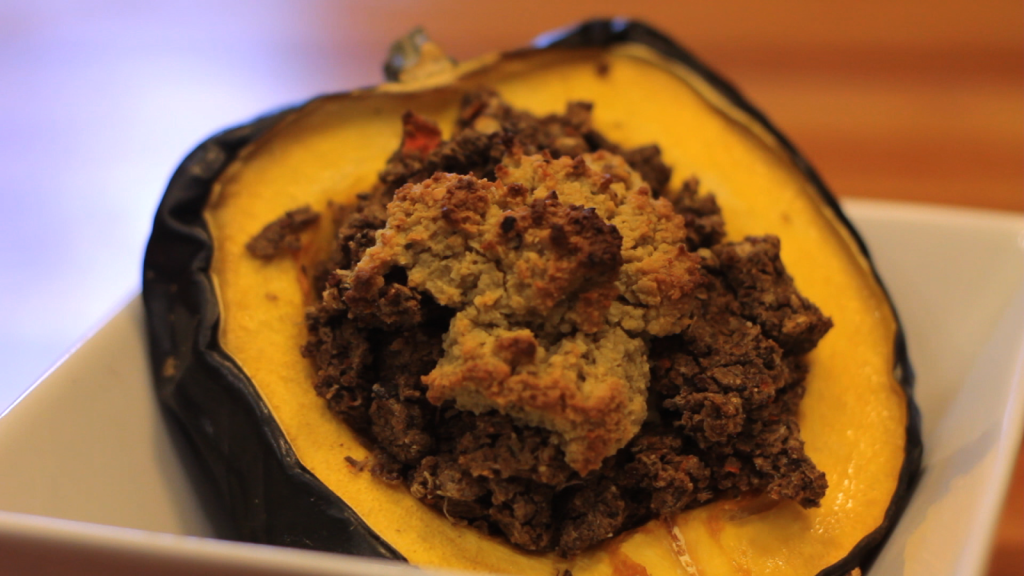
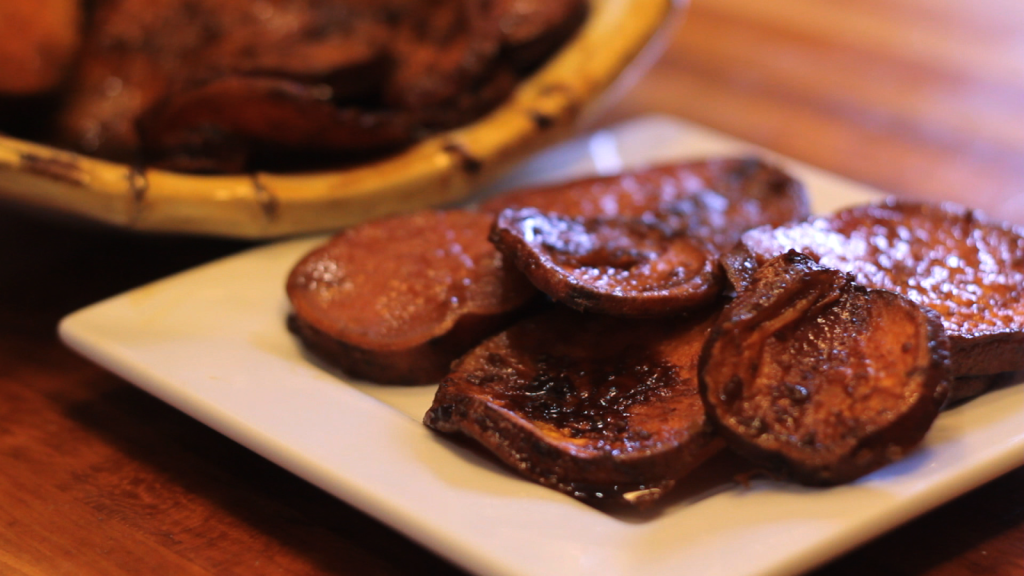
Ladies and gentlemen, I present to you what may be the greatest side dish of all time!
The first time I made this dish I ended up completely ignoring the main course and instead consumed all the yams.
By myself.
It was glorious.
I will most definitely be making this dish for Thanksgiving this year and then again when we go down South to visit my in-laws over Christmas.
Also, just to be totally honest here, when I say “yams” I actually mean “sweet potatoes.” Don’t be mad though, because when you say “yams” what you probably mean is “sweet potatoes” too. What we commonly refer to as a “yam” in the U.S. is actually a “sweet potato.” Even in grocery stores, what are labeled “yams” are usually “sweet potatoes.” The USDA has tried to crack down on this crazy scandal by requiring that sweet potatoes labeled “yams” include “sweet potatoes” in the label as well. That’s why you’ll often see “sweet potato yams.” Both yams and sweet potatoes are nutritionally similar but sweet potatoes have a nutritional edge because they have much higher levels of vitamin A, vitamin B6, and vitamin C.
While I usually don’t cook with oil because it is a processed food without any fiber, sweet potatoes (aforementioned “yams”) are one of those foods that benefits from being eaten with a small amount of fat. (Keyword here is “small,” folks! I’m talking 1-2 tablespoons for an entire recipe.) The fat allows us to better absorb the beta carotene, an antioxidant that is critical for eye health, bone health, and reproductive health.
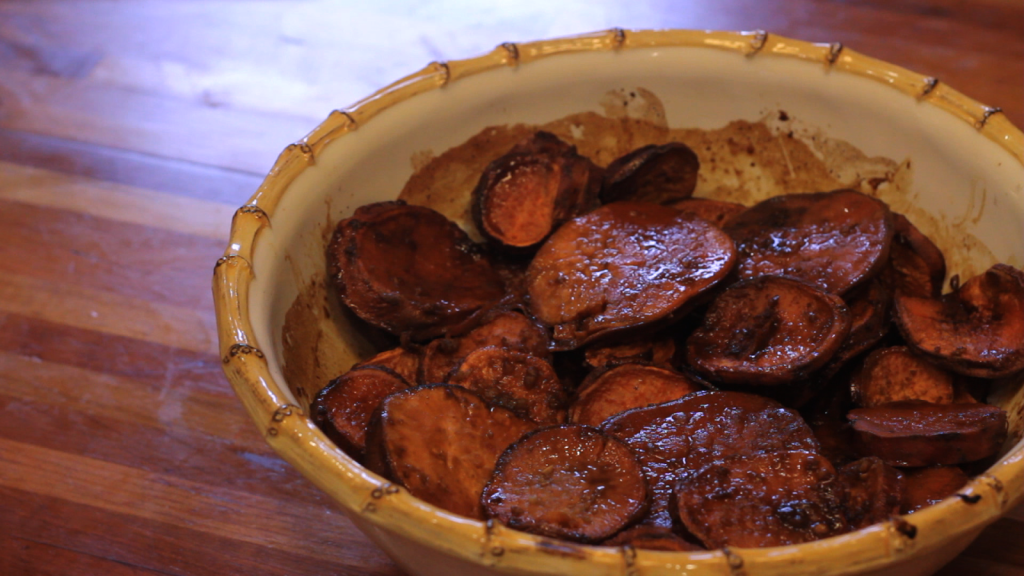
Instructions:
1. Preheat the oven to 425 degrees.
2. In a large bowl, toss the sweet potatoes with 1 tablespoon of the sesame oil.
3. Spread the sweet potatoes onto a parchment-lined baking sheet in a single layer and roast for 25 minutes. Flip, and roast for another 25 minutes.
4. Place the cinnamon stick at the bottom of a 2-quart baking dish, and add the sweet potatoes in layers. Set aside.
5. In a medium-size bowl, whisk together the remaining six ingredients plus the remaining tablespoon of sesame oil and pour over the sweet potatoes.
6. Bake, uncovered, for 30 minutes.

While this would, indeed, be a spectacular side salad for Thanksgiving, it almost seems unfair to make other dishes compete with this because it is such a star. Instead, I prefer to serve this hearty salad as an entree throughout the fall and winter months. For what it’s worth, Mr. Goldhouse says this is easily THE best salad he’s ever had, and one of the best dishes he’s ever had. That is high praise, indeed!
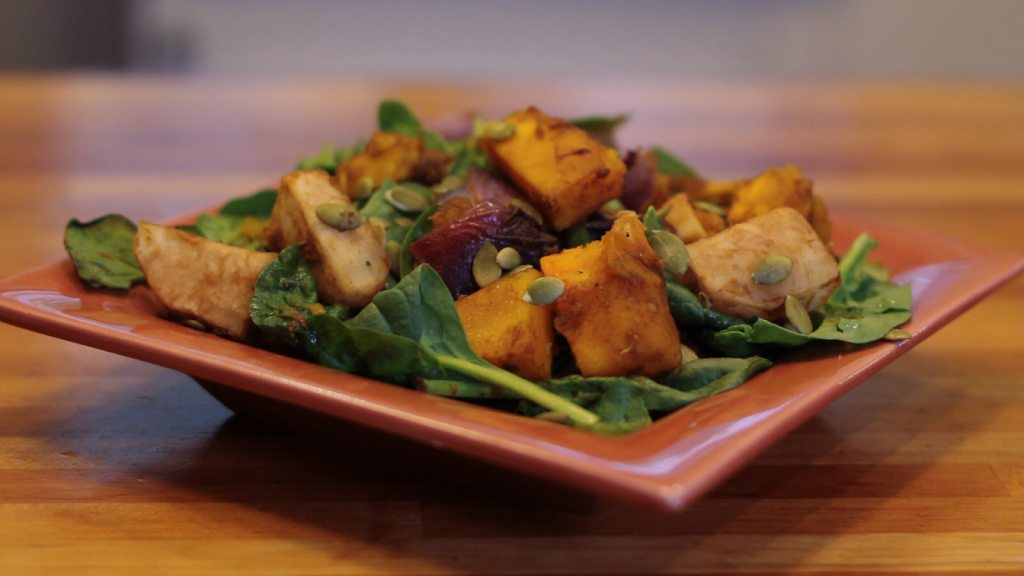
The roasted vegetables become as sweet as candy and because of their rich hues, it looks like you have gorgeous jewels on your plate. (For an even more bejeweled effect, add beets!) In addition to their beauty and deliciousness, root vegetables are also full of phytochemicals that help fight against cancer, diabetes, and heart disease.
Instructions:
1. Preheat the oven to 450 degrees.
2. Peel all the vegetables and cut them into large chunks.
3. In a large bowl, toss the vegetables with the ginger, maple syrup, water, and salt if using.
4. Spread the vegetables in a roasting pan (I recommend lining it with parchment paper) and roast for 40-60 minutes, stirring half way through, until vegetables are very tender and caramelized. A good way to tell the vegetables are done is when the onions have lost all of their crunchiness and have become sweet.
5. Place the roasted vegetables on top of the baby spinach and top with pumpkin seeds. Season with balsamic vinegar and some fresh ground pepper to taste.